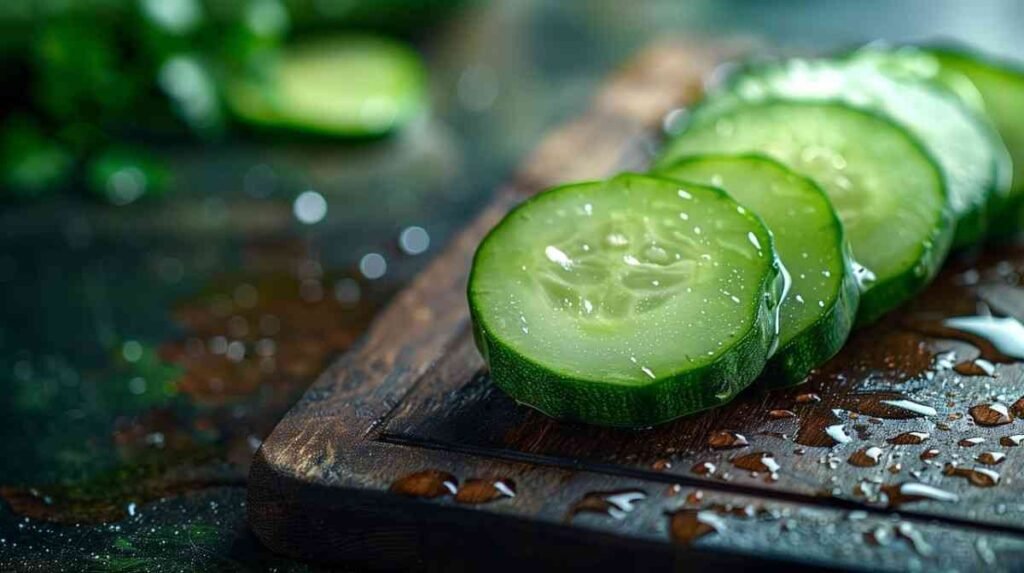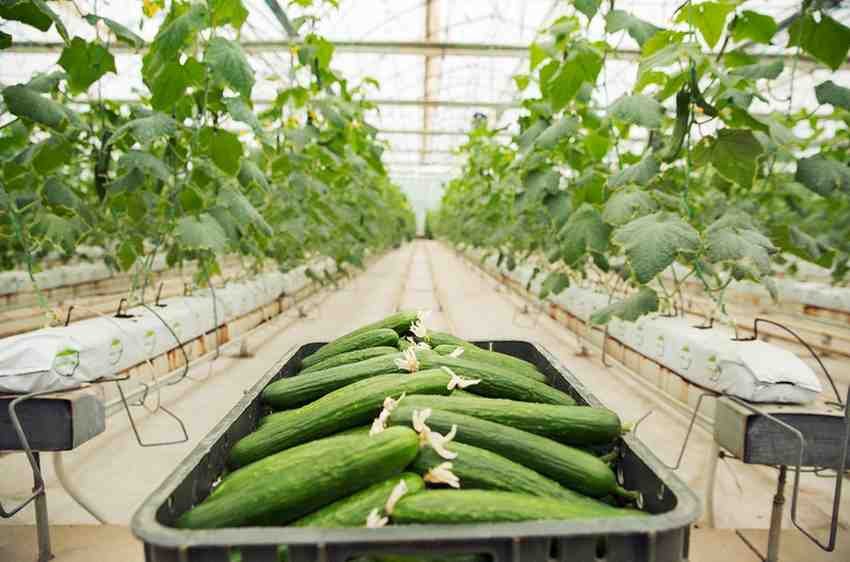Cucumbers are a much-loved garden vegetable, highly valued for their cooling taste and versatility in cooking. Growing your cucumbers has many advantages; you have access to fresh produce at your every whim, eat homegrown vegetables that are very beneficial to your health, and have the pride of having been there from planting to harvesting. This guide provides a comprehensive guide on how to grow cucumbers covering everything from choosing the right cultivar to troubleshooting common issues.
Choosing the Right Cucumber Variety
The first step in learning how to grow cucumbers is selecting the right variety. There are different types of cucumbers including slicers, pickles, and burpless. Slicers are best eaten fresh while pickling ones make good homemade pickles. Burpless cucumber varieties were developed with easier digestion in mind.
Climate conditions, available space, or intended use may influence your choice. Compact types will do well in small plots or container-grown cucumbers for instance. Some popular varieties include:
- Marketmore 76: A reliable slicer that performs well under varied conditions.
- Boston Pickling: High-yielding variety excellent for pickling purposes.
- Bush Champion: A compact type ideal for pots.
Preparing the Soil
Soil conditioning plays an important role in successful cucumber growing. Cucumbers prefer sandy-loam soil that drains well and has pH levels ranging between 6.0 and 7.0. To prepare your soil follow these steps:
- Test the Soil: Use soil testing kits to determine pH levels as well as nutrients contained herein.
- Amend the Soil: Adjust pH through liming (increase) or sulfuring (decrease). Enrich it with compost /well-rotted manure for fertility improvement.
- Mulch: Add a mulch layer above the ground surface purposefully preserving moisture content, regulating soil temperatures, and suppressing weed growth.
Planting Cucumbers
Knowing when and how to plant cucumbers is crucial. Cucumbers are warm-season vegetables, therefore, they should be sown after the last frost threat has passed and the soil has warmed to at least 60°F (16°C).
Starting from Seeds vs. Transplants
- Direct Sowing: Plant cucumber seeds directly in the garden at about 1 inch deep, spacing them 12 inches apart. Thin to one of the healthiest plants per hill when they have few true leaves.
- Transplanting: Start seeds indoors three to four weeks before the final frost date. Transplant seedlings into the garden with two true leaves and warm soil.
Spacing and Depth Requirements
- Spacing: In rows that are spaced five to six feet apart plant vining varieties approximately three or four feet apart. Bush-type cucumbers need two or three feet between plants.
- Depth: Plant transplants or seeds an inch below ground level.

Providing Optimal Growing Conditions
Full sun is required for cucumbers to grow well; therefore identify a site receiving at least six up to eight hours of sunlight per day where you can grow them.
Watering Guidelines
- Frequency: Depending on rainfall and temperature water cucumbers deeply once or twice weekly.
- Amount: Aim for around an inch of water in a week.
- Methods: Employ drip irrigation systems as well as soaker hoses when watering to keep vegetation dry thus reducing diseases’ chances of spreading among plants grown this way.
Temperature Preferences
Cucumbers perform best within the temperature range of 70°F – 85°F (21°C – 29°C). Use row covers at night during cold conditions for young plants if necessary.
Using Trellises or Supports
Instead, you can use trellises or supports for the vines to keep them from falling on the ground, improve air movement around the plants, and make it easier to pick their fruits. In addition to saving space, trellising helps in minimizing diseases.
Fertilizing and Nutrient Management
They need to be heavily fertilized throughout their growing season.
Nutrient Needs
- NPK Ratios: You may apply a fertilizer with equal amounts of nitrogen (N), phosphorus (P), and potassium (K) contents such as 10-10-10.
Types of Fertilizers
- Organic: Composting, manuring, and fish emulsion.
- Synthetic: These can come in granular or liquid form for your vegetable garden.
How and When to Fertilize
- Initial Fertilization: Mix compost or a balanced fertilizer into the soil before planting.
- Ongoing Fertilization: Side-dress with compost or apply a balanced fertilizer every 4-6 weeks during the growing season.

Pest And Disease Management
Cucumbers are highly prone to various pests and diseases.
Common Pests
- Aphids: Tiny insects that suck the sap of plants, they can be controlled by using insecticidal soap or neem oil.
- Cucumber Beetles: Yellow-green beetles that transmit bacterial wilt. They can be kept in check through the use of row covers and sticky traps.
Common Diseases
- Powdery Mildew: A fungal infection causing white powdery spots on leaves; spray fungicides, and make sure air is well circulated within the crop area.
- Downy Mildew: This causes the yellowing as well as browning of leaves. Resistance varieties and other good cultural practices should be used to avoid it.
Preventive Measures and Organic Control Methods
- Crop Rotation: Not planting cucumbers at the same spot every year reduces disease risks.
- Healthy Plants: Resisting better by keeping them healthy through watering and fertilization will help resist pests as well as diseases better.
Care And Maintenance
Regular maintenance ensures a productive cucumber harvest.
Weeding and Mulching
- Weeding: Keep cucumbers free from weeds once they emerge up to the completion of the growing season.
- Mulching: Use mulch to preserve water in the soil and eliminate competition for nutrients from weeds around plant roots.
Pruning and Training
- Pruning: Take away dead or sick leaves for better aeration among cucumber leaves which may cause diseases if not removed in time.
- Training: Lead climbing cucumbers on trellises or supports.
Monitoring Plant Health
Watch out for your plants frequently for pest attacks, diseases, or nutrient deficiencies throughout their life cycle.
Harvesting Cucumbers
Knowing when and how to harvest cucumbers is key to enjoying them at their best.
Signs of Readiness
- Size: Harvest slicing cucumbers when they are 6-8 inches long, pickling cucumbers at 2-4 inches, and burpless varieties at 10-12 inches.
- Color: Ensure all the cucumbers are green after maturity.
Best Practices
- Time of Day: Harvest in the morning when it is cooler.
- Technique: Use a sharp knife or pruner to cut cucumbers from the vine to avoid damaging the plant.
Storing and Preserving
- Refrigerate for a week: Keep them in a cool place that preserves their freshness for only seven days.
- Preservation: The excess cucumbers can be used in making cucumber relish or pickled.

Fixing Common Problems
Even with the best efforts, there will still be some problems.
Common Issues
- Yellowing Leaves: This is often an indication of nutrient deficiency or excessive watering.
- Poor Fruit Set: This may occur due to insufficient pollination and extreme temperatures.
- Bitter Cucumbers: Frequently resulting from inconsistent watering or high temperatures.
Tips for Improving Yield and Fruit Quality
- Consistent Watering: Provide enough water for your crops regularly so that they do not dry leading to poor fruit formation.
- Pollination: Encourage pollinators by planting flowers nearby.
- Temperature Control: Shade during extreme heat waves.
Conclusion
Growing cucumbers is an enjoyable and rewarding gardening experience that everyone should try out. By using this comprehensive guide, you are guaranteed an abundant harvest of fresh delicious cucumbers. Whether you have plenty of space in your garden or want to learn how to grow cucumbers in a pot, these hints will steer you into success. Begin your cucumber growing expedition now and benefit from home gardening extensively

